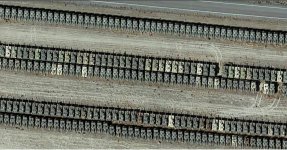I don’t want to sound condescending (apologies to
@PrairieFella if I come out that way) but they may be speaking from their experience as a crewman, which would (probably, I could be wrong) be viewing it from a unit/tactical level. That ground-level view is important but as we know from experience, rank, and postings, there is more to that. If I was about 10 years earlier in my career, I’d probably agree with them.
However … yes, only Infantry takes and holds ground. Even the RCAF and RCN folks know this - we can see it in Afghanistan and Ukraine. So yes,
@SeaKingTacco is also correct in that the RCAF and RCN are the folks that have a hand in getting them to the point of taking/holding ground.
Stepping back, and bringing @SupersonicMax’s earlier comments that kicked this off, the question is whether Canada objectively should be an Army-centric force, or a “quicker reaction” Air/Sea-centric force. This would need to be a clean-sheet re-think, which would be tough because we all have inherent unconscious biases based on our experiences and careers - perfect example being “we should divest armour”.
There is precedent - do we become Australia and try to do everything, or New Zealand and focus on a few things? Yes, NZ divested their fighter force but anecdotally, I wouldn’t want to mess with the SOF or Infantry folks.
If we become NZ, what things do we focus on?
Note: This in itself could (and should) be a thread split.



